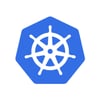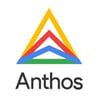One key to application modernization is moving from VMs for development to containers and Kubernetes.
For a lot of enterprises, especially those that haven’t adopted the cloud or a hybrid solution, this can be intimidating. Talent gaps, resources, buy-in from management—the list of roadblocks can seem long.
But at the end of the day, the benefits of moving to containers and Kubernetes for development far outweigh the challenges and risks. You just might need a little help getting there.
 Benefits of containers and Kubernetes
Benefits of containers and Kubernetes
The two major benefits of containers and Kubernetes are speed and flexibility.
Instead of a monolithic development process, where all teams working on an application need to complete their work before a deployment, containers and Kubernetes make it possible to constantly iterate and launch without the wait.
This greatly reduces time to market. It also saves resources by cutting wait times and improves the quality of the product since updates and fixes can be made much more quickly.
Getting there, however, may be more work than you're ready for. That's where Google Anthos comes in.
 How Anthos helps you transition to containers and Kubernetes
How Anthos helps you transition to containers and Kubernetes
Anthos is a hybrid cloud platform developed by Google for application modernization, cloud migration, hybrid cloud, and multi-cloud management.
Anthos’ roots are in Kubernetes (also developed by Google), which makes it a powerful tool for enterprises to move from VMs to containers without the need to greatly scale IT capabilities.
That's not all. There are a ton of benefits of this platform that makes it one we recommend to many of our clients. These include:
1. The ability to run Kubernetes on your own hardware
With Anthos, enterprises looking to migrate to Kubernetes and containers for development — or those looking to revert back to a more on-premises environment — are able to make that migration much easier than before. It’s also much less expensive, since it's an additive technology, which means no hardware refresh is required in most cases.
2. One central platform for your development teams
With Anthos, development teams have access to a consistent platform for building and managing applications across environments. Its suite of tools makes it easier to bring code into production securely and reliably regardless of where that development is taking place—in the cloud, on-premises, or in a hybrid solution.
For enterprises just getting their feet wet with containers and Kubernetes, Anthos also provides a central command and control center for managing application workloads. This central command makes it much easier to monitor and update applications, which accelerates the development process and helps bring new products and features to market faster.
3. Multi-cloud management
Anthos provides enterprises with substantial flexibility in where — and how — they manage workloads by offering a single pane of glass to manage applications regardless of where they reside.
Have some applications on-premises and others on Azure or AWS? Anthos makes it possible for you to not be locked in to any one provider or solution by allowing you to manage workloads and applications from a single management solution.
4. Native Kubernetes support
Kubernetes may be open-source, but it had its beginnings at Google.
Google leverages the brain trust that has managed Kubernetes in Google Cloud and lets you apply it to managing your own applications and development process. In other words, you don’t need the expertise in-house to fully embrace Kubernetes.
5. Heavy lifting by Google
Within Anthos are a suite of tools that manage everything from federated network management and the ability to create replicas in GCE instances, to easy observability of applications and infrastructure and high-speed connectivity between datacenters and the cloud.
Now, let's take a look at the core components that make Anthos as powerful as it is.
 Core components of Anthos
Core components of Anthos
More a package of tools than a single solution, Anthos is built to assist in nearly every step of the containers and Kubernetes development process. Included in the package are:
- Anthos Configuration Management for all your policy management needs.
- Google Cloud Platform (GCP) Marketplace and Cloud Run for Anthos to assist in application development.
- Anthos Service Mesh for service management of applications.
- Anthos Google Kubernetes Engine (GKE) for container management.
- Stackdriver for management of operations.
 Management at scale
Management at scale
A growing number of organizations are adopting Kubernetes because of its ability to effectively manage containers, deploy new applications rapidly and repeatedly, and accelerate speed to market.
As popular as it is, however, it’s not without its own challenges—especially for large-scale development environments. Once development clusters grow into the hundreds, managing each one individually can become a logistical nightmare.
That’s where Google Anthos can help.
Put simply, Kubernetes excels at managing containers. The problem is, once an enterprise graduates from 5-10 Kubernetes clusters to hundreds, managing data, deployment, and updating all those can become a very real problem.
Anthos has been developed to address this problem by providing the aforementioned single pane of glass visibility for managing a large number of Kubernetes clusters via the GCP Cloud Dashboard.
More importantly, users are able to conduct this management regardless of where they currently have Kubernetes at work—on-premises, in the hybrid cloud, or across multiple cloud providers.
This environmental adaptability gives enterprises a much greater degree of flexibility in how they work.
Enterprises are able to use Kubernetes on hardware they’ve already invested in, developers can work where they’re most comfortable, and enterprises with specific security and governance can utilize Kubernetes on-premises.
So, what's next? Let's dive into how you can start leveraging Google Anthos technology to modernize.
 Putting Anthos to work
Putting Anthos to work
While Anthos has been developed to be as turnkey as possible, implementing its usage is not as simple as plug and play.
That’s where Redapt can help.
Whether you’re looking to expand your on-premises datacenter or spread your Kubernetes workloads across multiple clouds, our infrastructure and high cloud capabilities can tune Anthos to meet your unique needs.
This will alleviate any potential installation issues you might have. It will also put you in a position to hit the ground running, once Anthos has been implemented, because we can solve operational issues and handle fine-tuning of the platform in our own lab facility.
Whether you’re currently in the process of migrating to the cloud or have a hybrid solution already in place, Anthos can make adopting containers and Kubernetes easier—not just on the GCP, but wherever your workloads reside.
Click here to learn more about how you can work with Redapt and Google Anthos to transition to containers and Kubernetes.
You can also continue your research by checking out these other blog posts:
- Looking at Google Anthos? Here Are 3 Great Use Cases
- Why Google Anthos Is a Multi-Cloud Gamechanger for Enterprises
- 3 Common Misconceptions CIOs and CTOs Have About Google Anthos
- How Google Anthos Is Making Enterprises as Agile as Startups
- 3 Questions To Ask Before Getting Started With Google Anthos

Google Cloud and Redapt
Whether you are looking to explore an alternative to your existing provider, interested in learning more about GCP’s best-in-class security and price-performance characteristics, or already committed to cloud-native application development, Redapt brings the right capabilities to help you get the most out of your Google Cloud investment.
Get Clarity Today.
Book a Clarity Call and Get Actionable Insights For Implementation Success.
- Discover make-or-break focus areas.
- Identify process gaps.
- Uncover the best tech solutions.
Categories
- Cloud Migration and Adoption
- Enterprise IT and Infrastructure
- Artificial Intelligence and Machine Learning
- Data Management and Analytics
- DevOps and Automation
- Cybersecurity and Compliance
- Application Modernization and Optimization
- Featured
- Managed Services & Cloud Cost Optimization
- News
- Workplace Modernization
- Tech We Like
- AWS
- Social Good News
- Cost Optimization
- Hybrid Cloud Strategy
- NVIDIA
- Application Development
- GPU



